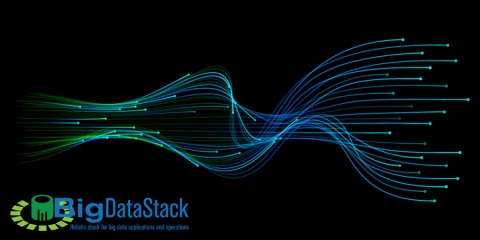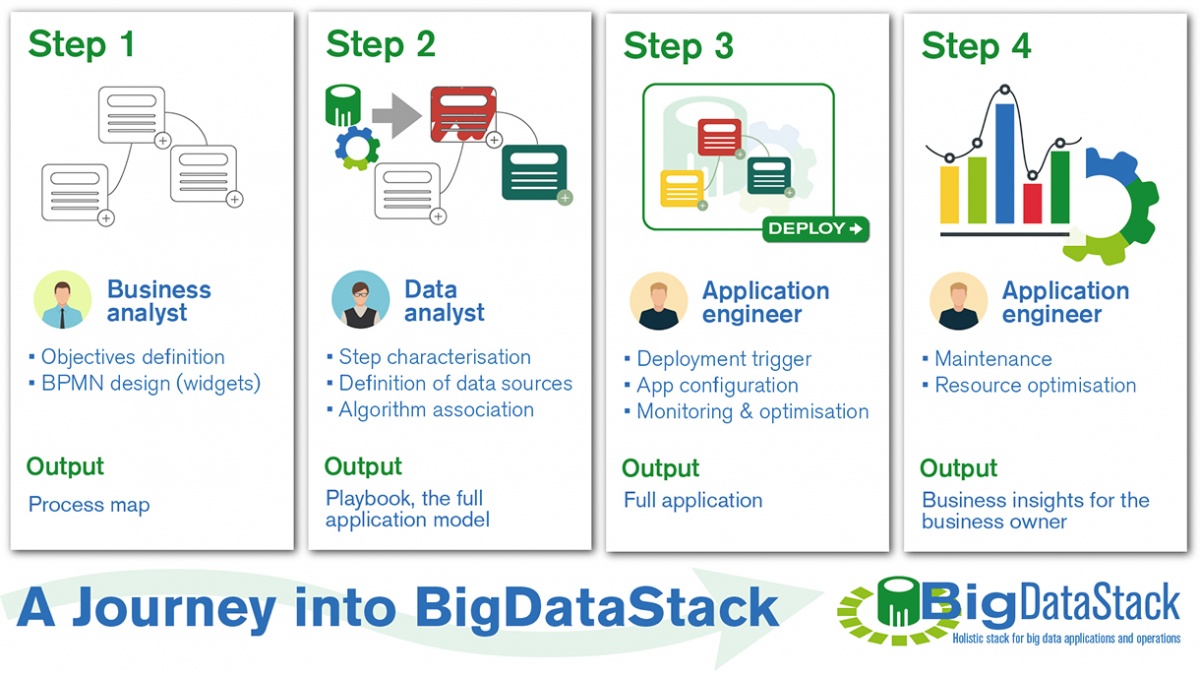
After thousands of lines of code, 4 patents filed, 21 components deployed and numerous contributions and integrations spread over 3 years, BigDataStack project is finally ready to showcase its results publicly. The entire stack of software components has been run with several TeraBytes of data and tested in 3 pilot use cases. A seamless flow allowing 4 major players to work with BigDataStack and get insightful information on their own business results and performances.
How BigDataStack works?

BigDataStack is a holistic stack of software components providing real-time analysis and suggestions for its adopter. Developed and validated by some among the most advanced companies and universities in the world, the BigDataStack solution interacts with your flow of bigdata analysing trends and predicting valuable behaviours and critical events.
To this end, the actions required to make it work may be synthesised as follows:
Step 1 - Business Analyst
The BigDataStack journey starts with the strategic definition of the dataflow and of the overarching goals of the business itself, like revenue or accuracy. Our friendly interface allows a non-technical user to interact and design the stream of data through a Business Process Management Notation system (BPMN). This system is made up of widgets, representing nodes in the data flow, that can be easily dragged and dropped or connected by lines, implying connections and data streams among them.
Step 2 - Data Analyst
As the output of the previous step, a process map is produced and can be taken over to the Data Analyst who is in charge of each step characterisation, the definition of the data sources and the algorithm association. BigDataStack is domain-agnostic, thus meaning that every business data flow can be virtually connected and analysed. Thanks to the data analyst, a full application model, the “BigDataStack Playbook”, is produced and passed to the next step, where the deployment and the running of the software stack will take place.
Step 3 - Application Engineer
The deployment of a running application is then performed at the ease of a click. An application engineer is responsible for hitting the button and making our software start their job. The data start to flow and the gears of our machine start to turn. Only minimum maintenance and some resource optimisation are needed to keep everything working smoothly.
Step 4 - Business owner
It’s time, for your business, to reap the benefits of our work. Insightful information will come automatically in the form of notification and errors, directly on your desk. Predictive analytics will run on top of both your streaming and historical data, aiming at optimising all your processes.
But BigDataStack has a lot more and we want to let you know directly from the mouth of our people.
See the end-to-end demonstration in the videos below:

